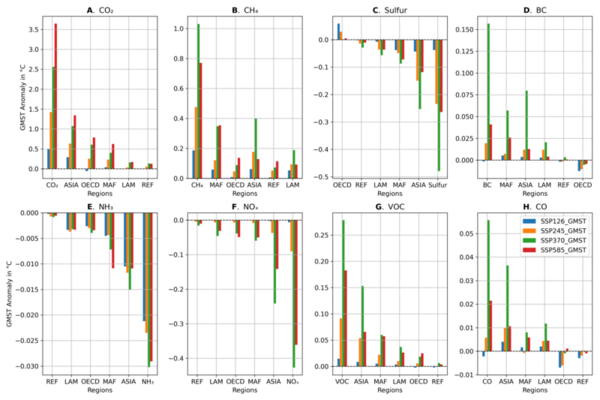The impact of greenhouse gases, regions, and sectors on future temperature anomaly with the FaIR model
(1) Adlai E. Stevenson High School, (2) Centre for Atmospheric Science, University of Cambridge
https://doi.org/10.59720/24-067
Greenhouse gas emissions from industrial activities have resulted in global warming, threatening the human way of life. Climate modeling is crucial to the effort to combat climate change by determining the potential impacts of anthropogenic emissions and thus identifying where emission reduction efforts should focus. In this study, we hypothesized that various economic sectors, geographic regions, and greenhouse gas species could impact the future global mean surface temperature (GMST) anomaly in ways that deviate from the historical and present norm. We used the Finite Amplitude Impulse Response (FaIR) model, a reduced complexity climate model, as well as four of the Shared Socioeconomic Pathways (SSPs), SSP126, SSP245, SSP370 and SSP585, to test our hypothesis. We determined that the future impact of specific economic sectors, geographic regions, and greenhouse gas species deviates from their historical impact. We found that Asia and Africa will contribute to a greater share of the GMST anomaly in the future. We also determined that the warming from most of the greenhouse gas species, excluding carbon dioxide, is highest under the SSP370 scenario (the climate scenario that emphasizes regional rivalries related to climate policy). We concluded that the industrial sector would become more important under the SSPs that represent a lower degree of warming. This research augments the SSPs by considering specific variables not represented in the general SSP scenarios, determining the precise climate impacts of said variables. Additionally, this research helps to determine what emission reduction strategies can most efficiently reduce the GMST anomaly.
This article has been tagged with: